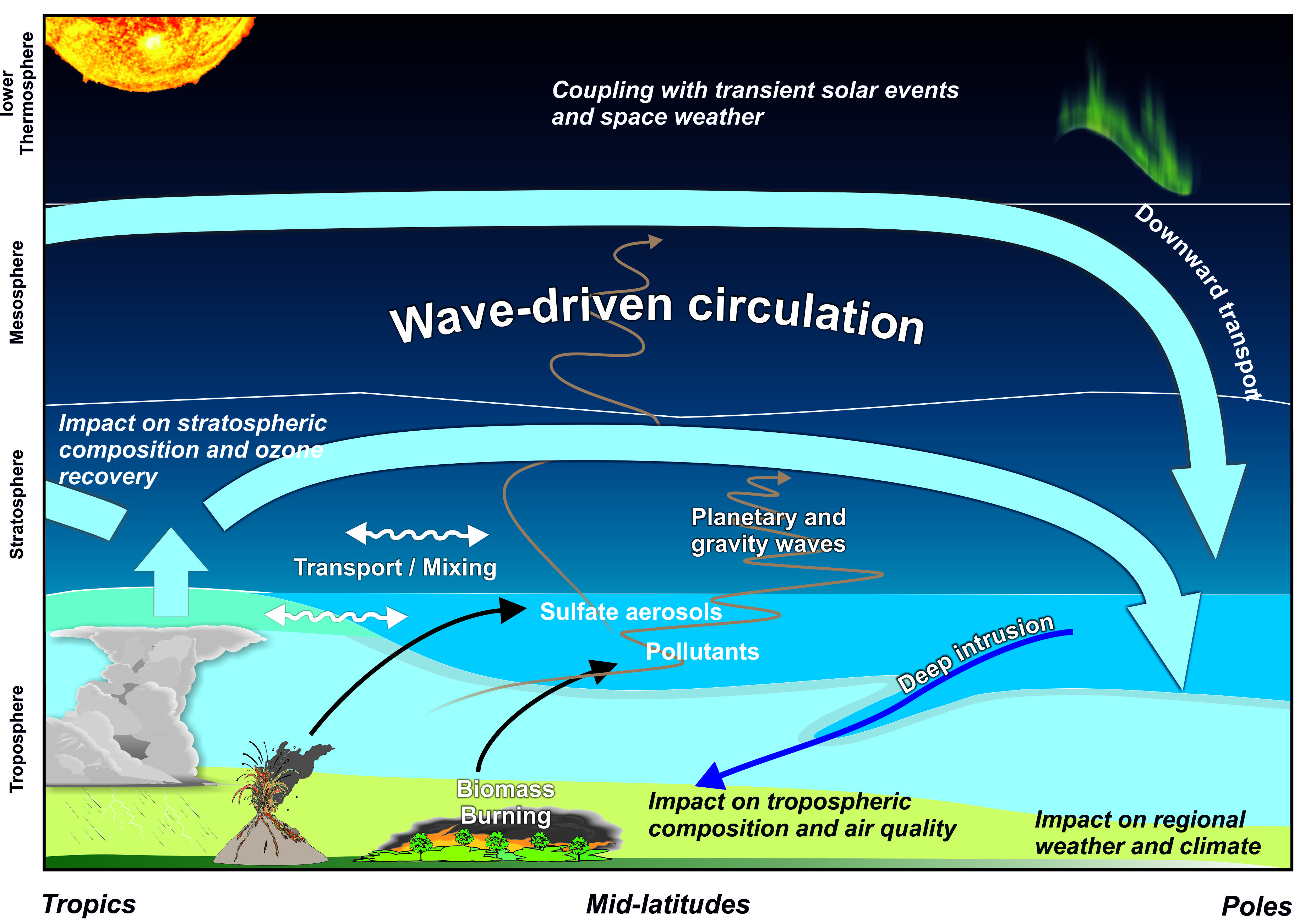The Science Case
The global atmosphere is changing throughout its entire depth from the surface to the fringes of space due to anthropogenic emissions and natural sources of greenhouse gases, pollutants, aerosol precursors, and the recovery from ozone-depleting substances
©KIT
Changes in atmospheric composition are closely coupled with changes in circulation and together affect surface climate, weather and air quality.
To achieve a step change in our understanding of the coupling of atmospheric circulation, composition and regional climate change, CAIRT addresses the following specific science objectives:
- Diagnose the changing atmospheric circulation between the upper troposphere and the lower thermosphere, through observations of temperature, long-lived trace gases and derived age-of air,
- Quantify the atmospheric gravity wave momentum flux and wave driving through temperature observations at unprecedented scales,
- Quantify the flux of reactive nitrogen species from the upper atmosphere into the stratosphere to improve our understanding how transient solar events and space weather affect natural climate variability,
- Quantify lower atmospheric coupling associated with the lofting or injection of natural and anthropogenic plumes of pollutants and aerosol precursors into the upper troposphere and stratosphere, their impacts on composition, and their crucial role for climate forcing and feedbacks.,
- Attribute changes in stratospheric ozone due to circulation and chemistry by providing observations of the relevant chemical species,


